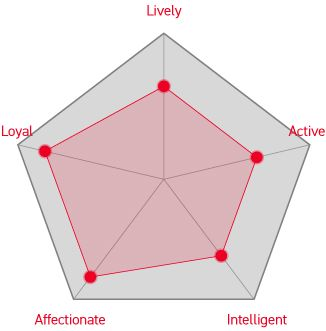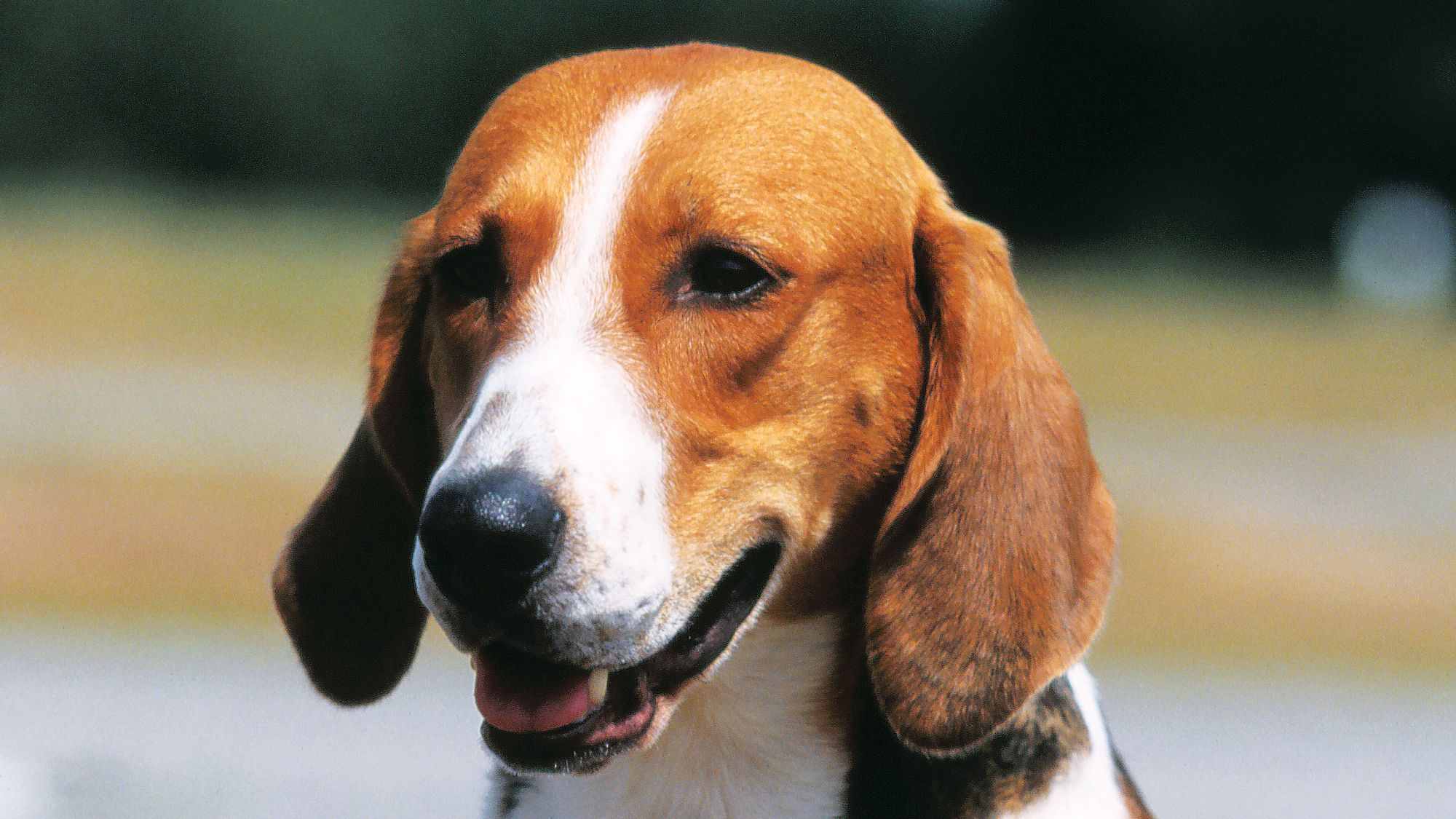
Let's talk Harriers
Harriers were bred many hundreds of years ago to hunt hares as part of a pack, but nowadays these good-natured hounds, with their sweet brown eyes and velvety ears, are just as content to be part of a human family. As long as they get enough exercise, that is—Harriers’ athletic origins are evident in their sturdy, muscular appearance and these dogs need space to run off some of their legendary energy.
Official name: Harrier
Origins: United Kingdom

| Drooling tendencies: |  |
Warm weather? |  |
| Shedding level: |  |
Suited to apartment living? |  |
| Energy level (high, low, medium) *: | High | Kid-friendly? * |  |
| Compatibility with other pets: |  |
Can stay alone? * |  |
* We advise against leaving pets alone for long stretches. Companionship can prevent emotional distress and destructive behaviour. Speak to your veterinarian for recommendations.
Every pet is different, even within a breed; this snapshot of this breed’s specifics should be taken as an indication.
For a happy, healthy and well-behaved pet, we recommend educating and socialising your pet as well as covering their basic welfare, social and behavioural needs.
Pets should never be left unsupervised with a child.
All domestic pets are sociable and prefer company. However, they can be taught to cope with solitude from an early age. Seek the advice of your veterinarian or trainer to help you do this.


| Baby age: | Birth to 2 months |
| Puppy age: | 2 to 12 months |
| Adult age: | 1 to 7 years |
| Mature age: | 7 to 10 years |
| Senior age: | From 10 years |

1/7
Get to know the Harrier
All you need to know about the breed
If a Beagle seems like not quite enough hound, but a Foxhound a little bit too much, a Harrier might be the breed for you. This relatively rare dog slots in between its smaller and larger hound cousins in terms of size, and shares the same white-black-tan colouring. But Harriers are of course a breed in their own right, and a lovely one at that—energetic, friendly and sociable with a charm all their own and quirks and characteristics that have been honed since the Middle Ages, when they came into being.
Those large, silken ears are just crying out to be stroked and there will be no complaints from the Harrier—these affectionate dogs are gregarious by nature and regard their human family as their pack. Once trained (this will require some patience as they are intelligent but also independent-minded) Harriers get on well with other dogs as well as children, although, as with any hounds, they should not be left unsupervised with very young ones. And they are not ideal pets for families with small animals such as rabbits.
As befits a dog originally bred to hunt, Harriers have retained plenty of energy as well as a strong prey instinct and a formidable scenting power. A securely fenced-off outdoor space is essential, because once off the lead, Harriers will follow those powerful noses—tirelessly and endlessly!

2/7
2 facts about Harriers
1. The amazing singing dog
Not only are they super-sniffers, Harriers also love to sing. Well … you might call it baying or howling: It’s certainly a particularly … er … melodious bark. Either way, they like to make their distinctive voices heard. Harriers tend to sing when they’re excited, but training should help them learn to pick an appropriate moment.
2. Dogs that dig digging
Harriers, unsurprisingly given their hare-hunting origins, love to dig. That could be simply for fun or if they catch the scent of something interesting. Some owners like to set aside a doggy digging area in the garden and train their Harriers to limit their excavations to one spot. If they are left alone for long stretches – remember, that pack instinct runs deep – you might find yourself with tunnels running the length of the garden.
History of the breed
The Harrier breed dates back to 13th century England, where these distinguished-looking dogs were originally bred to hunt hares, with the first known pack, the Penistone Pack, established in 1260, a pack that existed until well into the 18th century.
The Harrier breed’s popularity really took off in the 19th century, with the formation of the Association of Masters of Harriers and Beagles in the UK and many packs established around the country. At the time, Harriers were more popular than their smaller cousins, Beagles. With such long-distant origins, it’s unsurprising that the Harrier’s exact ancestry is unclear, but they are thought to be the product of crosses between Talbot Hounds, Bloodhounds and Basset Hounds.
The breed, although rare in the U.S., is recognised by the American Kennel Club, though it hasn’t featured on the books of its U.K. counterpart since 1971.

4/7
From head to tail
Physical characteristics of Harriers
1. Eyes
Friendly, inquisitive expression with large dark eyes.
2. Head
Large floppy ears lying flat against a fairly broad head.
3. Coat
Smooth flat coat, white with black and tan patches.
4. Body
Muscular legs and body and an upright bearing.
5. Tail
Medium-length, slightly bushy tail held high.

5/7
Things to look out for
From specific breed traits to a general health overview, here are some interesting facts about your Harrier

6/7
Caring for your Harrier
Grooming, training and exercise tips
Harriers’ short, shiny coats are easy to keep in great condition—just a quick brush once a week should do it. Those oh-so-strokable ears need to be checked frequently, and cleaned if necessary and their nails might also need a trim from time to time if they are not worn down naturally from all that running and playing.
These strong, sporty dogs need a lot of exercise—long walks, play sessions, off-the-lead runs in a securely (and we do really mean securely) enclosed space. And ideally a combination of all three. Be warned, if they don’t get enough exercise, or are left alone for too long, Harriers may well resort to destructive behaviour such as digging.
These hounds have a … how shall we put it? Stubborn streak? Let’s just say they know what they want. However, as long as you remain patient and calm and start early on, Harriers’ intelligent natures mean training should be a success. Make sure any food rewards come out of their daily food rations to prevent them from becoming overweight.
7/7
All about Harriers
If you have the energy to keep up with them, then yes. These dynamic dogs need a lot of exercise. As they were originally bred as pack dogs, Harriers are outgoing and friendly and once trained, get on well with other dogs or children. However, their prey instincts run deep so smaller pets such as hamsters or guinea pigs are not suitable Harrier housemates.
No. Sorry! No dog is truly hypoallergenic, and it is a dog’s dander (skin flakes) not its fur, that triggers allergies in humans. However, when it comes to grooming, although the Harrier does shed, its short, smooth coat is fairly low-maintenance. Leaving more time for walkies.
translations.feature.breeds.otherbreeds
Read More about Breeds

How your dog's nutrition needs change with age

How to adopt a dog

Things to consider before getting a dog
Sources
1 - Veterinary Centers of America https://vcahospitals.com/
2 - Royal Canin Dog Encyclopaedia. Ed 2010 and 2020
3 - Banfield Pet Hospital https://www.banfield.com/
4 - Royal Canin BHN Product Book
5 - American Kennel Club https://www.akc.org/


